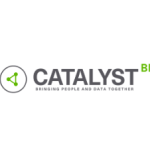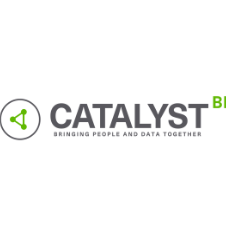Building resilience with Catalyst: top strategies for customer retention during economic downturns
The UK is continuing to experience increased housing, energy and food costs, with UK GDP predicted to ‘barely grow’, unemployment and debt to increase and income inequality to deteriorate (source: National Institute for Economic and Social Research). A slowdown in economic activity has resulted in many businesses coming under an increasing amount of pressure.
With the UK economy looking poor and the threat of recession still looming, how can we, as businesses, prepare for a downturn?
During an economic downturn, nurturing and retaining the customers you already have becomes even more critical. Acquiring new customers becomes less important and safeguarding your revenue streams becomes the priority. Your focus should be on keeping your existing customer base and planning your future growth strategy for once the economic situation improves.
The following strategies will help you navigate through an economic downturn, sustain strong customer relationships and win the loyalty of your customers. From delivering a personalised customer experience through to building resilience, the following best practices will help your business to thrive during challenging times.
Focus on clients that already provide a sustainable and dependable income
Customers are more likely to stick with familiar products and services when their environment becomes uncertain. This is your opportunity as a business to take advantage of engaging in long-term loyalty programmes. Customers seek the certainty that comes with familiarity.
Did you know?
- Acquiring a new client can be up to 25 times higher than keeping an existing one
- Existing customers spend 67% more than new ones
- The odds of selling to an existing client are between 60-70% higher than to a new client, which only ranges between 5-20%
This demonstrates that retaining your current clients can make a huge difference to your revenue. They are likely to be reducing their budgets and looking at methods of cost saving as the economy continues to deteriorate. Keep your customers motivated to spend with you by, for example, providing them with the opportunity to spread their purchase costs over longer periods of time.
Focusing your efforts on those clients that already provide you with a sustainable and dependable income is most likely help maintain steady business during challenging economic times. Make sure that they keep coming back by building strong loyal relationships with them. Loyalty will result in positive referrals and reviews, which could bring you new sources of revenue.
Make every choice with customer satisfaction in mind
To retain your existing customers during an economic downturn, focus your efforts on inventive thinking and collaborative methods, making choices with their satisfaction in mind. Avoid only focusing on the development of new strategies to expand your customer base. Instead, look at methods of keeping your current customers for longer. As well as reward-based loyalty programmes, consider:
- Supplying discounted alternatives
- Taking a membership/policy break, making it easy to restore it once they return
- Removing the onboarding or registration process for those who return after needing to pause
To prevent any potential loss of customers, only reach out to those who are having challenges with payments, rather than announcing it to all of your customers.
Understand how the economic slump is affecting your customers
Reach out to your customers to find out how the current state of the economy is affecting them. They will also be experiencing the difficulties that come with an economic slump. Often, a customer will cancel an insurance policy, for instance, without giving advance notice. Making sure that you understand their requirements to enable you to work with them to come to a solution. You can:
- Enquire as to whether their needs have changed
- Introduce new service provision that could assist in satisfying their needs
- Provide a tailored experience to show that they are important to you
- Arrange face-to-face meetings where customers can discuss any concerns or support that they require with their existing contracts
Formulate personalised customer incentives
During economically challenging times, many businesses will respond by reducing their expenditure and protecting their most important assets. You should therefore support your customers by offering them useful solutions, providing them with something of value to foster trust in your brand.
Given the rise in the cost of living, those in the retail industry may, for example, see reduced footfall in their stores, resulting in lower sales, less accurate demand forecasting and excessive stock.
For businesses to accurately forecast these elements, they need to have a solid understanding of their customers, including their motivations. This can be obtained through accessing key data insights across a variety of customer touchpoints including:
- Transactions
- Location
- Lifetime value
- Customer profiles
- Popular product categories
- Preferred marketing channels
Loyalty programmes enable businesses to visualise, understand and analyse their customer’s behaviour. Personalisation is key to building brand loyalty, with tailored rewards providing a deeper emotional connection between the consumer and your brand.
A home or property insurance company may, for example, provide customers with discounts on their home insurance based on location, age, security and upgrades including fire, smoke or burglar alarms. A manufacturer may offer a redeemable catalogue of products and services in return for purchasing their products.
Constructing a well-devised, personalised customer loyalty programme which is adapted to your offerings and meets the needs of your customers will maintain both revenue and your customer base. Relevant, timely and reward-based customer loyalty programmes have been found to provide many benefits in both positive and negative economic climates.
Use Artificial Intelligence to accurately predict customer churn
Businesses who understand and utilise the power of Artificial Intelligence (AI) are much more likely to predict and prevent customer churn and improve their customer offerings to better meet their needs (source: Forbes).
Customer churn modelling utilising AI will predict which of your current customers are most likely to switch to a competitor. Utilsing this knowledge enables your business to reduce customer churn by empowering you to focus your efforts on those most at risk of churning and providing them with incentives to stay.
Through automatically identifying the individual reasons why a customer is likely to churn, you can understand the causes of your churn rate. Subsequently, you can adjust your processes and tailor your churn prevention strategies accordingly.
Being knowledgeable about your customer’s wants and needs, including what might cause them to consider switching to a competitor, will help you to formulate relevant and timely campaign narratives to reduce customer attrition and increase customer retention.
A retailer, for example, could utilise the benefits of customer churn analysis to gain increased:
Demand forecasting: including store-level demand
Supply chain transparency: including out of stock (OOS) predictions
Marketing efficiencies: including marketing channel modelling and customer lifetime value (LTV) predictions
With so much customer data, continually changing consumption, supply chain challenges and the need to improve forecasting, a vast number of retailers have seen the benefits of AI for churn prediction. The end result is, of course, a profoundly positive impact upon profitability.
Embrace the challenges of the economic downturn
Economic downturns can be a scary time for businesses. Embrace the challenges that come with it as opportunities for growth and transformation. Your existing customers are your most valuable asset, therefore make sure that customer retention is at the heart of your strategy. Invest in meeting their needs and building strong relationships to maintain your income streams and position your business favourably for future growth when the economy picks up.



